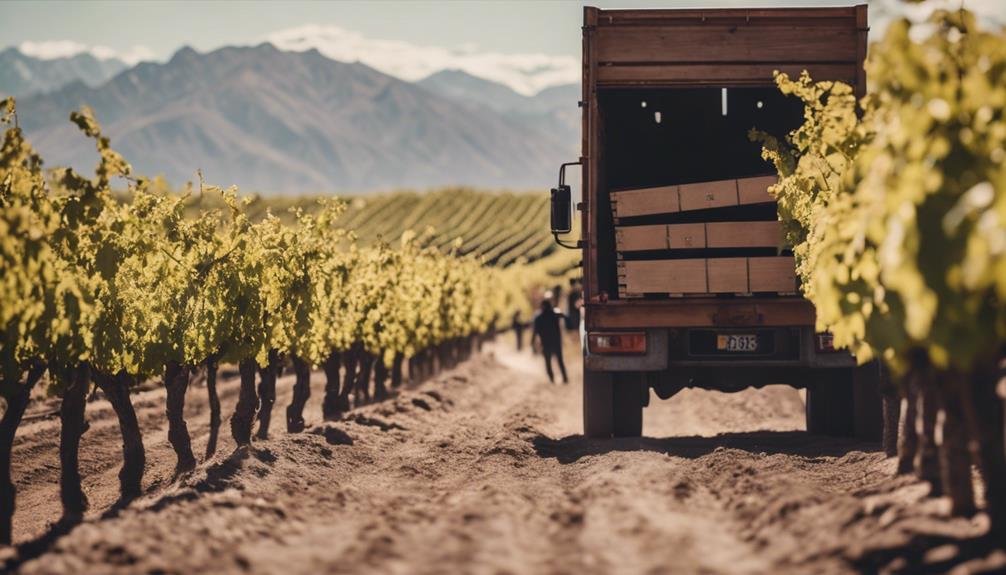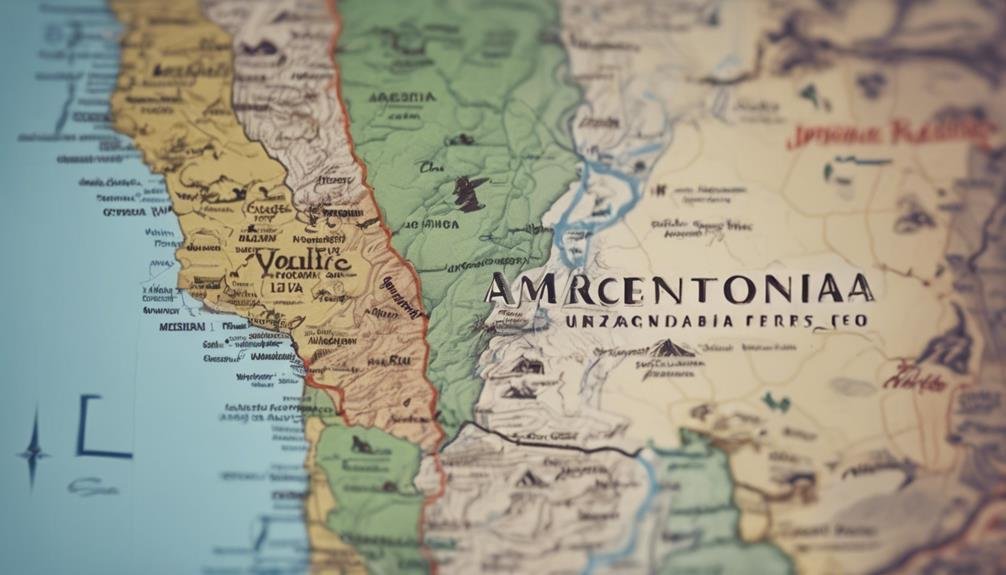Explore the world of Malbec wine with its fascinating history and evolution from its French roots to becoming a star varietal in Argentina. Discover the diverse flavor profiles showcasing blackberry, plum, and black cherry notes in Argentine Malbecs, while French Cahors Malbecs offer leathery hints with tart currant and black plum flavors. Argentina leads in production, but Malbec cultivation spans globally, with rising popularity worldwide. Pair this bold and fruity wine with lean red meats, blue cheese, and rich dishes for an elevated dining experience. Explore Malbec from different regions for unique characteristics waiting to be discovered.
Malbecs Origins and Evolution
Originating in France and evolving into a prominent varietal in Argentina, Malbec has undergone a fascinating journey of adaptation and acclaim in the world of wine.
Historically, Malbec was used as a blending grape in Bordeaux, France. However, due to challenges like weather conditions and pests, it thrived in Mendoza, Argentina, starting in 1868. This shift led to the development of unique Malbec blending techniques, with Argentina now leading global production.
Malbec's historical significance lies in its transformation from a lesser-known blending grape to a celebrated single varietal. Its impact on modern winemaking techniques is evident in the focus on producing high-quality, terroir-driven Malbec wines that showcase the grape's full potential, influencing winemakers globally to explore and elevate this versatile variety.
Unique Flavor Profiles of Malbec
Malbec's evolution from a blending grape in Bordeaux to a prominent varietal in Argentina has not only transformed its global presence but also revealed a diverse range of unique flavor profiles that captivate wine enthusiasts worldwide. Flavor exploration and aroma discovery are central to understanding the nuances of Malbec wines.
Taste sensations and palate pleasures abound in Malbec, with Argentina showcasing main fruit flavors like blackberry, plum, and black cherry, complemented by nuances of milk chocolate, cocoa powder, violet flowers, leather, and a sweet tobacco finish. On the other hand, French Malbec from Cahors offers a different experience with leathery notes, tart currant, black plum, and savory bitterness, along with higher acidity and hints of black pepper and spice.
The varying flavor profiles of Malbec showcase the versatility and complexity of this beloved wine varietal.
Malbec Production and Distribution

With a significant presence in key wine regions around the world, the production and distribution of Malbec wines play a pivotal role in the global wine market.
- Malbec grape varieties, cultivation
- Global Malbec consumption trends
Argentina leads in Malbec production, with over 75% of all Malbec acres planted. Malbec cultivation extends to major regions like France, the USA, Chile, South Africa, Australia, and New Zealand.
Global consumption trends show a rise in Malbec popularity due to its unique flavor profiles and versatility in food pairings. Malbec grapes are cultivated in diverse climates, contributing to the wine's distinct characteristics.
The distribution of Malbec wines is expanding globally, with an increasing number of consumers recognizing its quality and value.
Malbecs Perfect Food Pairings
Amidst the intricate world of wine pairing, understanding the art of matching Malbec with food elevates the dining experience to new heights. Malbec's bold and fruity profile harmonizes with various dishes, creating flavorful combinations that delight the palate.
Culinary matches for Malbec include lean red meats like beef brisket or pork shoulder, blue cheese, mushrooms, and spices such as cumin and garlic. To enhance the Malbec experience, consider pairing it with black pepper buffalo burgers topped with blue cheese mushrooms and garlic kale chips.
The rich, robust flavors of Malbec also complement dark poultry, duck, and lamb dishes. Additionally, herbs like parsley and thyme, along with smoked paprika, accentuate the wine's complex notes, making these pairings a delightful culinary adventure.
Exploring Diverse Malbec Wine Regions

Exploring various wine regions reveals the diverse expression of Malbec across the globe.
- Argentina: Known for rich, fruity Malbecs with notes of blackberry, plum, and black cherry, influenced by the Andean terroir and high-altitude vineyards.
- France: Cahors Malbecs are renowned for their leathery profile, with flavors of tart currant and black plum, showcasing the impact of the French terroir.
- USA: Developing a reputation for bold Malbecs, influenced by varying climates from California to Washington State.
- Chile: Produces Malbec with a unique character, influenced by the Pacific Ocean's cooling effect and diverse terroirs.
- Australia: Emerging as a Malbec producer, showcasing the impact of the warm climate on the grape's flavor profile.
Frequently Asked Questions
How Does the Elevation Impact the Flavor of Malbec Wines?
Elevation notably impacts Malbec wine flavors by influencing climatic conditions that affect grape ripening. Higher elevations lead to cooler temperatures, resulting in increased acidity and more concentrated flavors like black fruit, floral notes, and spices, enhancing taste nuances.
What Makes Argentine Malbec Wines Distinct From French Malbecs?
Argentine Malbec wines stand out from French Malbecs due to climate variations and terroir, resulting in distinct flavor profiles. Argentine Malbecs typically undergo shorter oak aging and use different fermentation techniques, showcasing richer fruit flavors with softer tannins.
Are There Any Unique Winemaking Techniques Specific to Malbec?
Malbec wines often undergo oak barrel aging to enhance flavors. The fermentation process can vary, but some winemakers choose to ferment Malbec in stainless steel tanks to preserve fruitiness, while others opt for concrete vats for complexity.
Can Malbec Wines Be Aged Further for Enhanced Flavors?
Malbec wines can be aged further to enhance flavors through the aging potential and flavor evolution process. Proper cellaring tips are essential for the maturation process, allowing Malbec to develop complexities and soften tannins over time.
How Does the Soil Composition Affect the Taste of Malbec Grapes?
The soil composition, a key component of terroir influence, directly impacts the taste of Malbec grapes. Soil types, such as limestone-rich soils in Cahors, France, contribute to wine characteristics like minerality and structure, enhancing grape flavors and complexity.
Conclusion
To sum up, the enchanting intricacies of Malbec wine create a marvelous tapestry of flavors, history, and regional diversity. From its origins in France to its flourishing presence in Argentina, the distinctive flavor profiles and ideal food pairings of Malbec offer a rewarding experience for wine enthusiasts.
Exploring diverse regions and production techniques only deepens the appreciation for this noble grape variety. Embrace the essence of Malbec and elevate your wine journey with each exquisite sip.